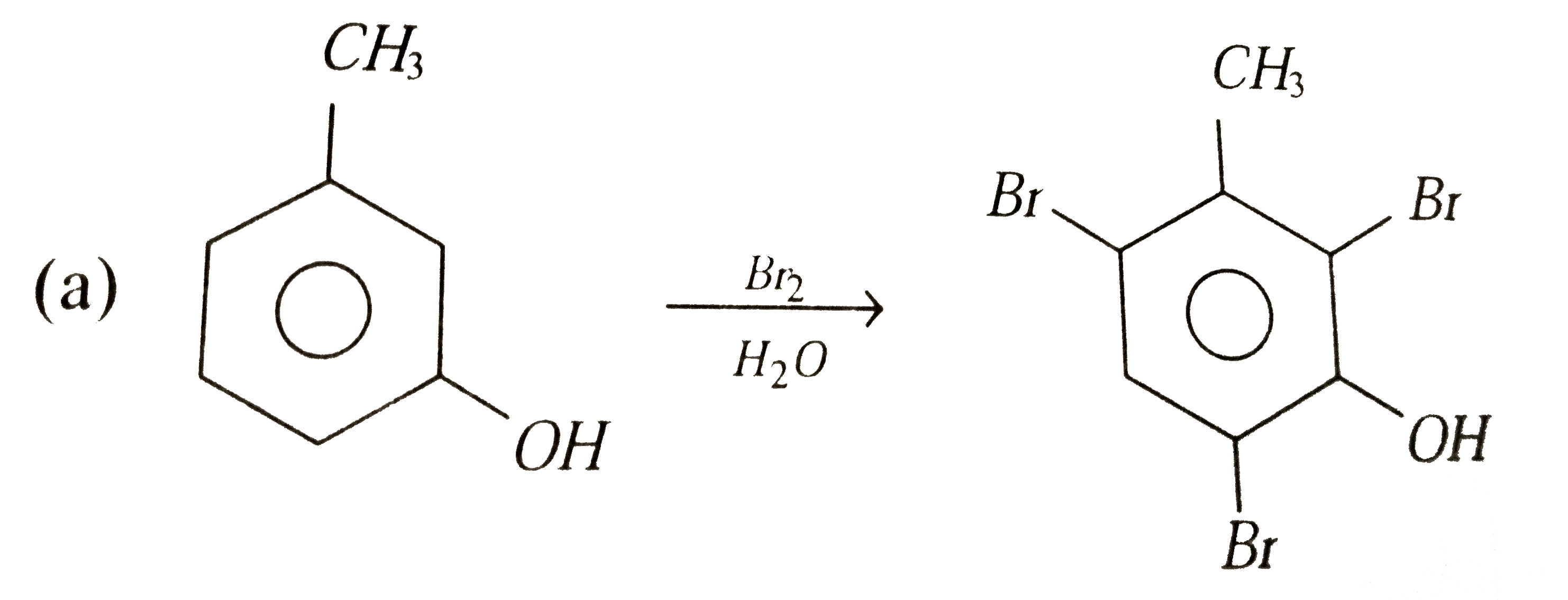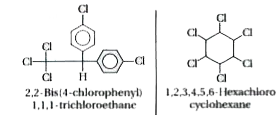InterviewSolution
This section includes InterviewSolutions, each offering curated multiple-choice questions to sharpen your knowledge and support exam preparation. Choose a topic below to get started.
| 4451. |
Which property increases in magnitude as the atomic number of alkali metals increases ? |
|
Answer» Electronegativity |
|
| 4452. |
Which of the following properties displays progressive increase down the group in the periodic table? |
|
Answer» Electronegativity |
|
| 4453. |
When the value of entropy is greater, then the ability for work is |
|
Answer» maximum |
|
| 4454. |
Write the relationship between standard free energy change and the equilibrium constant of a reaction. What is the sign of standard free energy change when the equilibrium constant is less than one? |
|
Answer» SOLUTION :`Delta G^@=-RT In K_p` OR `Delta G^@=-2.303 RT LOG K_p` `Delta G^@` is POSITIVE. |
|
| 4455. |
Which of the following upon treatment with tert-BuONa the colour of bromine? |
|
Answer»
 . .
|
|
| 4456. |
You are provided withthe followingDeltaG^(@)values:S_ 8+2 O _2to2 SO_2 , DeltaG^(@)at 1073K=-544 kJ2Zn+ S_2 to2ZnS , Delta G^(@)at1073K= -293kJ2Zn + O _2 to2 ZnO ,DeltaG^(@)at1073K =-480kJCalculateDeltaG^(@)at1073 K forthefollowingreaction at thisremperature, 2ZnS +3O _2to2 ZnO+2 SO _2andpredictwhether thisreactionis thermodynamically feasibleor not. |
|
Answer» Solution :THEFREE ENERGY`(Delta_ rG ^(@) ) `ofthereaction=`Delta G ^(@) ` ( products )-`Delta G^(@) ` (reactants) ` ""=Delta G ^(@) ( Zn O )+[ DeltaG^(@) (SO_2 ) ] -Delta G^(@)(ZNS) ` `""=(-480)+(-544) - (-293) KJ` `""=-1024 +293 k J=-731 k J` Since` Delta _ rG^(@) `ofthereaction- ve,therefore, thisreactionisfeasibleat1073 K. |
|
| 4457. |
Which one is antihistamine drug? |
|
Answer» Cimetidine (TEGAMET) |
|
| 4458. |
The structure of the compound that gives a tribromo derivation on treatment with bromine water is |
|
Answer»

|
|
| 4459. |
Which of the following does not react with xenon to form compounds |
|
Answer» `OSeF_5` |
|
| 4460. |
True order of bond angle among group -16 hydrides is |
|
Answer» `H_(2)O gt H_(2)S gt H_(2)SE gt H_(2) TE` |
|
| 4461. |
Which sweetening agent are used to prepare sweets for a diabetic patient? |
|
Answer» Solution :Artificial SWEETENING AGENTS such as, (i) saccharin (ii) ALITAME (iii) Aspartame can be USED in preparing sweets for DIABETIC patients. |
|
| 4462. |
The relationship between mole fraction (X_(A)) of the solute & molality 'm' of its solution in ammonia would be |
|
Answer» `(55.56 (X_(A)))/(1 - X_(A)) = m` |
|
| 4463. |
Which of the following alkanes cannot be synthesised by the Wurtz reaction in a good yield ? |
|
Answer» `(CH_(3))_(2) CH- CH_(2) - CH (CH_(3))_(2)` |
|
| 4466. |
Which of the following is not an oxidizing agent ? |
|
Answer» `SO_(2)` |
|
| 4467. |
Which possesses highest percentage of ionic character: |
|
Answer» HCl |
|
| 4468. |
When H_2S is passed through the HCl containing aqueous solution of CuCl_2 HgCl_2 BiCl_3 and CoCl_2, it does not precipitate out |
|
Answer» CuS |
|
| 4470. |
The stability of complexes depends upon stability constant. Higher the value of stability constant, more will be stability of complex. It can also be determined with the help of dissociation constant. Higher the value of dissociation constant, lesser will be stability. Smaller cation, with higher charge can form more stable complex. Stronger the ligand, more stable will be complex. Polydentate ligands form more stable complex than unidentate ligand. If multidentate ligand is cyclic, it further increases the stability, it is called macrocyclic effect. Which of the following exist as dimer? |
|
Answer» `Al(CH_(3))_(3)` |
|
| 4471. |
The stability of complexes depends upon stability constant. Higher the value of stability constant, more will be stability of complex. It can also be determined with the help of dissociation constant. Higher the value of dissociation constant, lesser will be stability. Smaller cation, with higher charge can form more stable complex. Stronger the ligand, more stable will be complex. Polydentate ligands form more stable complex than unidentate ligand. If multidentate ligand is cyclic, it further increases the stability, it is called macrocyclic effect. Which of the following is most stable? |
|
Answer» `[Co(en)_(3)]^(3+)` |
|
| 4472. |
The stability of complexes depends upon stability constant. Higher the value of stability constant, more will be stability of complex. It can also be determined with the help of dissociation constant. Higher the value of dissociation constant, lesser will be stability. Smaller cation, with higher charge can form more stable complex. Stronger the ligand, more stable will be complex. Polydentate ligands form more stable complex than unidentate ligand. If multidentate ligand is cyclic, it further increases the stability, it is called macrocyclic effect. Which of the following compound is liquid at room temperature: |
|
Answer» `Cr(CO)_(6)` |
|
| 4473. |
The stability of complexes depends upon stability constant. Higher the value of stability constant, more will be stability of complex. It can also be determined with the help of dissociation constant. Higher the value of dissociation constant, lesser will be stability. Smaller cation, with higher charge can form more stable complex. Stronger the ligand, more stable will be complex. Polydentate ligands form more stable complex than unidentate ligand. If multidentate ligand is cyclic, it further increases the stability, it is called macrocyclic effect. Formation of complex involves. |
|
Answer» exothermic, DECREASE in ENTROPY |
|
| 4474. |
The total number of identical spheres required in cubic close packing arrangementof a unit cell is |
|
Answer» 6 |
|
| 4475. |
Which of the followingcompound are having white ppt ? |
|
Answer» `K_(2)FE[Fe(CN)_(6)]` |
|
| 4476. |
The stability of complexes depends upon stability constant. Higher the value of stability constant, more will be stability of complex. It can also be determined with the help of dissociation constant. Higher the value of dissociation constant, lesser will be stability. Smaller cation, with higher charge can form more stable complex. Stronger the ligand, more stable will be complex. Polydentate ligands form more stable complex than unidentate ligand. If multidentate ligand is cyclic, it further increases the stability, it is called macrocyclic effect. Which of the following is called Wilkinson's catalyst? |
|
Answer» <P>`[(PH_(3)P)_(3)Rh]Cl` |
|
| 4477. |
Write the chemical formula of PCI_5 (s). |
| Answer» SOLUTION :`PCl_5` EXISTS as an IONIC COMPOUND in solid state . It has the STRUCTURE `[PCl_4]^(+)[PCl_6]^(-)` . | |
| 4478. |
Write shorthand notation for the cell for each of thefollowing reactions :(a) Cu_((aq))^(2+) + 2Ag_((s)) + 2Br_((aq))^(-) to Cu_((s)) + 2AgBr_((s)) (b) Sn_((aq))^(2+) is oxidized by Br_(2(1)) |
|
Answer» Solution :(a) `Cu_(aq)^(2+) + 2AG_((s)) + 2Br_(aq)^(-) to Cu_(s) + 2AgBr_((s))` `2Ag_((s)) + 2Br_((aq))^(-) to 2AgBr_((s)) + 2e^(-)`(Oxidation HALF reaction at ANODE ) `Cu_((aq))^(2+) - 2e^(-) to Cu_((s))` (Reducation half reactionat cathode) Hencethe CELL is , `Ag_((s)) |AgBr_((s)) |Br_((aq))^(-) (1M) || Cu_((aq))^(2+)(1M) |CU` (b)`Sn_((aq))^(-) + Br_(2(l)) to Sn_((aq))^(4+) + 2Br_((aq))^(-)` `Sn_((aq))^(2+) to Sn_((aq))^(4+) + 2Br_((aq))^(-)` (Oxidation halfreactionatanode) `Br_(2(l)) + 2^(-) to 2Br^(-)`(Reductin halfreactionat cathode). Hencethe cell is , `Pt| Sn_((aq))^(2+),Sn_((aq))^(4) || Br_((aq))^(-) | Br_((aq))^(-) | Pt ` |
|
| 4479. |
When alcoholic solution of ethylene dibromide is heated with granulated zinc, the compound formed is |
|
Answer» Ethylene<BR>Ethyne |
|
| 4480. |
The salt Al(OH)_(3) involved in the following two equilibria. Al(OH)_(3)(s)hArrAl^(3+)(aq)+3OH^(-)(aq),K_(sp) Al(OH)_(3)(s)+OH^(-)(aq)hArrAl(OH)_(4)^(-)(aq),K_(c) Which of the following relationship is CORRECT at which solubility is minimum? |
|
Answer» `[OH^(-)]=((K_(sp))/(K_(c)))^(1//3)` |
|
| 4482. |
Which one of the following is a secondary alcohol? |
|
Answer» 2 - Methyl - 1 - propanol |
|
| 4483. |
The work done by the gas liberated when 50 g of iron (molar mass 55.85 g mol^(-1)) reacts with hydrochloric acid in an open beaker at 25^(@)C |
|
Answer» Solution :`W=-PV=-nRT` `w=-(50)/(55.85)xx8.314xx298` `w=-2218.05 =-2.218 kJ` |
|
| 4484. |
Which of the following carbocations would not likely rearrange to more stable carbocation ? |
|
Answer»
|
|
| 4485. |
Which poisonous compound is formed if Chloroform is kept in open air ? |
|
Answer» Phosphine |
|
| 4486. |
The second and third rows of rows of transition elements resemble each other much more than they resemble the first row. Explain why? |
| Answer» Solution :Due to LANTHANOID contraction, the ATOMIC radii of second and third ROW transition elements become ALMOST equal. HENCE, they resemble each other much more as compared to first row elements. | |
| 4487. |
The smallest cation and the smallest anion are respectively |
|
Answer» `H^(+) and H^(-)` |
|
| 4488. |
Write the formula of the following coordination compound Tetraammine diaquacobalt (III)chloride |
| Answer» SOLUTION :`[CO(NH_3)_4(H_2O)_2]Cl_3` | |
| 4489. |
When mangnese dioxide is fused with KOH in air, it gives |
|
Answer» POTASSIUM permangante |
|
| 4490. |
Which hydroxide will have lowest value of solubility product at normal temperature ? |
|
Answer» `Mg(OH)_(2)` |
|
| 4491. |
Which of the following is not used as antioxidant in food ? |
| Answer» Answer :C | |
| 4492. |
X overset(O_(3)//Zn)rarr , The IUPAC name of compound Y is : |
|
Answer» `2`-Cyclohexylbutane |
|
| 4493. |
What is the mass (in grams) of an aluminium block whose dimensions are "2.0 in."xx"3.0 in."xx"4.0 in." and whose density is 2.7g//cm^(3)? Given that 1 in. = 2.54 cm. |
|
Answer» Solution :Here, unit CONVERSION FACTORS are `1=(2.54cm)/("1 in.")=("1 in")/(2.54cm)` Hence, required mass (in g) `= "2.0 in"XX"3.0 in"xx"4.0 in"xx(2.54cm)/("1 in")xx(2.54cm)/("1 in")xx(2.54cm)/("1 in")xx(2.7g)/(1cm^(3))=1.1xx10^(3)g.` |
|
| 4494. |
The standard heat of formation of H_2O_((l)) from its elements is –285.83 kJ. "mole"^(-1)and the standard entropy change for the same reaction is -327 JK^(-1) at 25^@C. Will the reaction be spontaneous at 25^@C ? |
| Answer» SOLUTION :`DELTA G_r^@` = - ve` , SPONTANEOUS | |
| 4495. |
Write the name of monomers used for getting the following polymers : (i) Teflon, (ii) Buna-S. |
|
Answer» SOLUTION :(i) TETRAFLUOROETHENE. (II) 1, 3-butadiene and STYRENE. |
|
| 4496. |
Under which of the following conditions, conductance, sp. Conductance and eq. conductance are all equal ? |
|
Answer» 1000 cc of the SOLUTION CONTAINS 1 eq. of the ELECTROLYTE |
|
| 4497. |
Watersolubleof vitamins must besupplied regularly in dietbecausethey aredietbecause theyare readity excreted in urine. |
|
Answer» |
|
| 4498. |
What are the IUPAC names of the insecticide DDT and benzenehexachloride ? Why is their use banned in India and other countries ? |
Answer» Solution : These substances are NON bio DEGRADABLE and are highly toxic. Beside this, they GET STORED in a fatty tissues and their concentration keeps increasing in the food chain. |
|
| 4499. |
Urea reacts with hydrazine to give: |
|
Answer» SEMICARBAZIDE |
|
| 4500. |
Which of the following process is used in the extraction of metallurgy of magnesium ? |
|
Answer» FUSED SALT electrolysis |
|